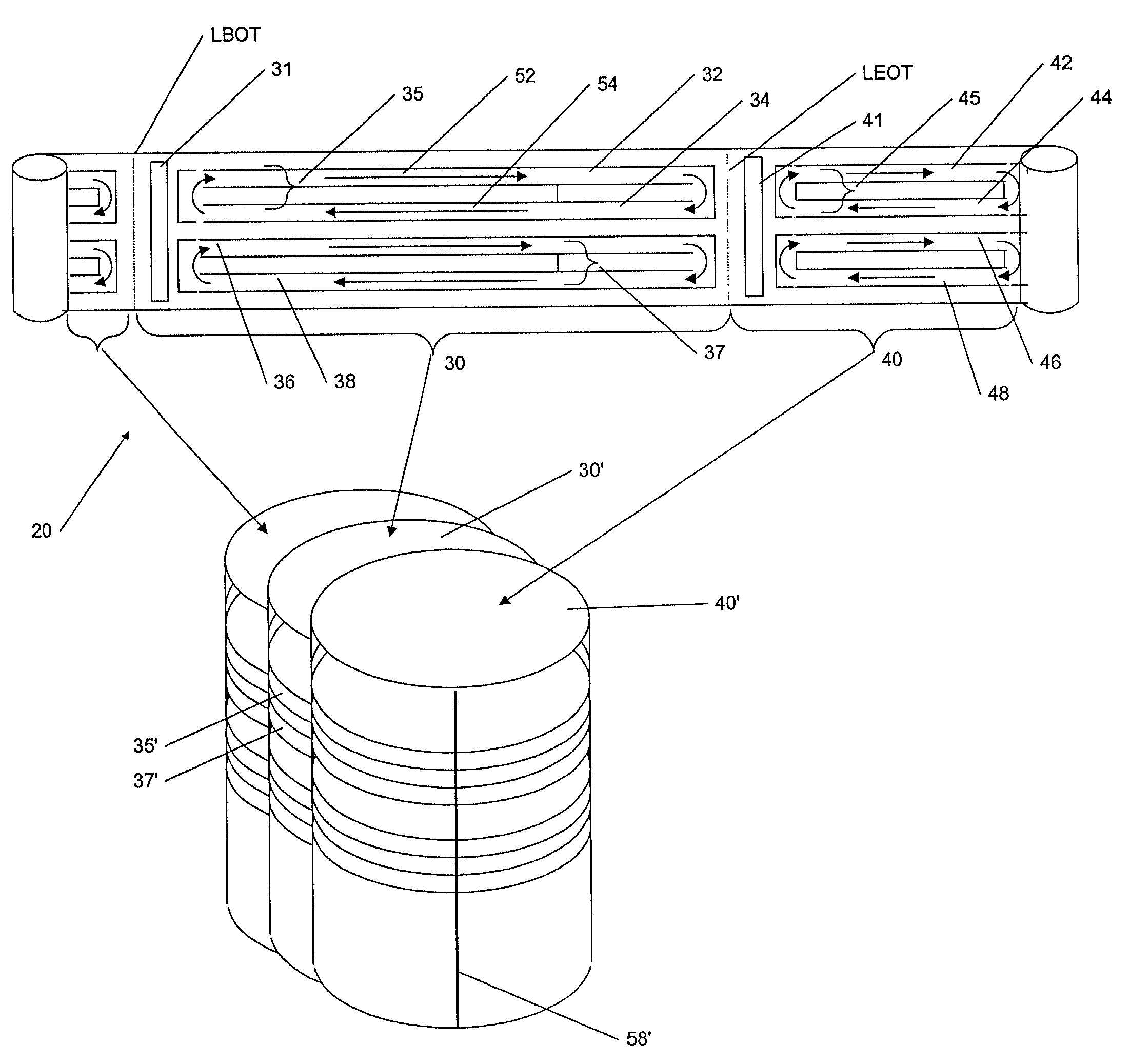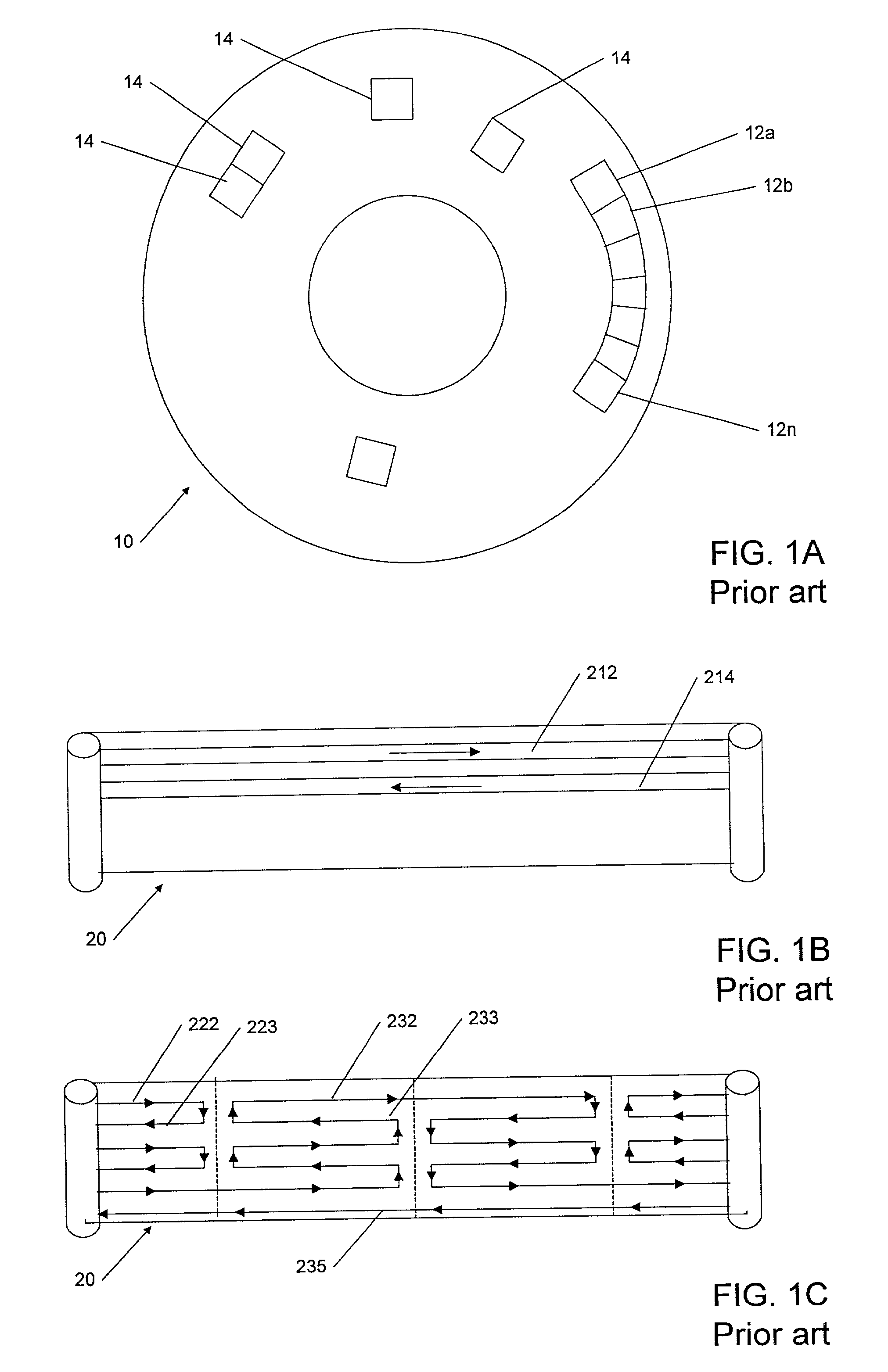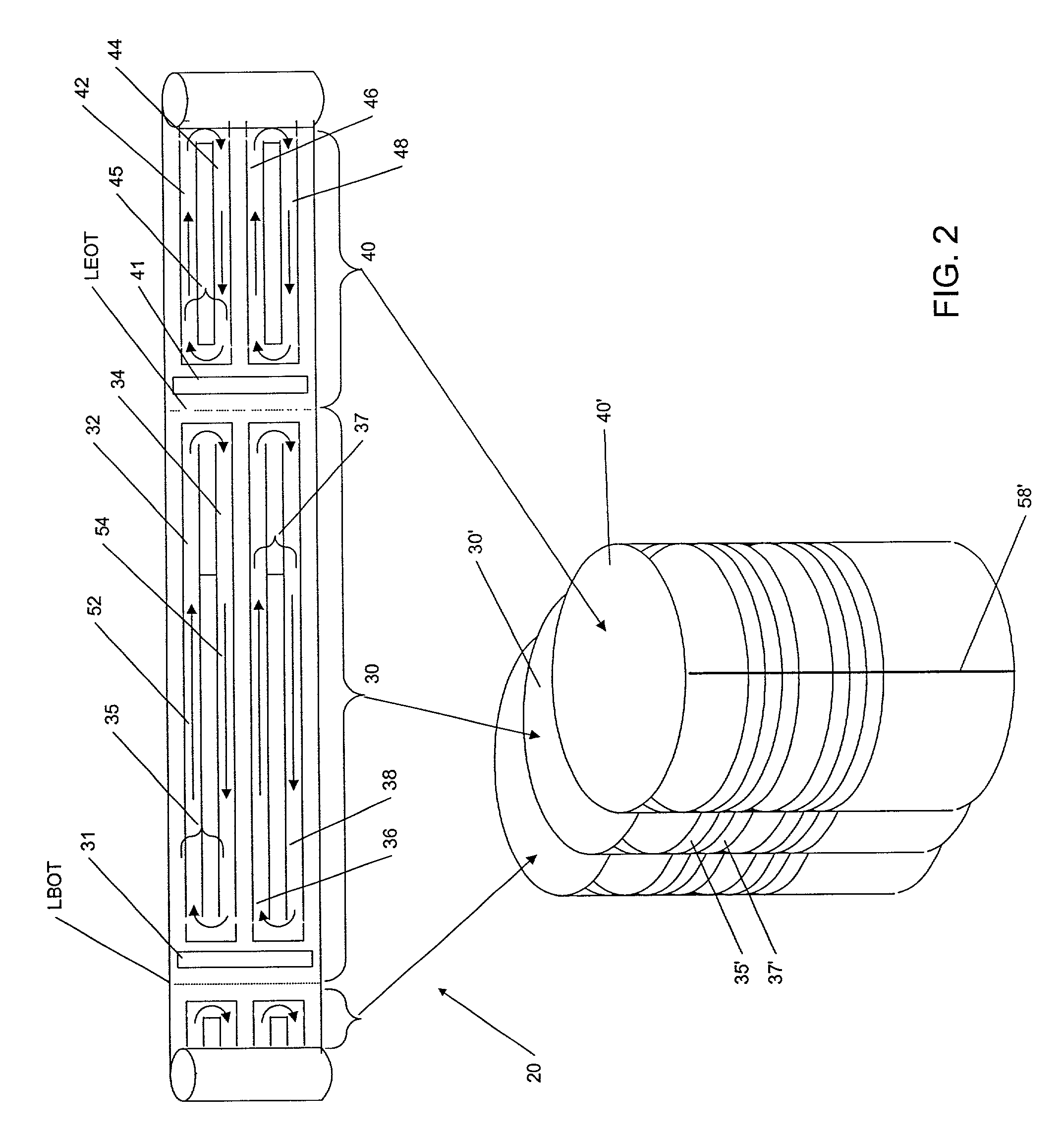Data storage devices for large size data structures
a data storage device and data structure technology, applied in the direction of recording signal processing, maintaining head carrier alignment, instruments, etc., can solve the problems of fragmentation, hard disk system less efficient, data fragmentation is avoided,
- Summary
- Abstract
- Description
- Claims
- Application Information
AI Technical Summary
Benefits of technology
Problems solved by technology
Method used
Image
Examples
Embodiment Construction
[0020]FIGS. 1A–1C depict three exemplary prior art techniques for storing data on to a recording medium. FIG. 1A depicts a traditional disk storage system 10 wherein a data file is subdivided into a plurality of fragments 12a, 12b, . . . , 12n, 14, each of which is typically 512 bytes in size. Initially, the disk system may select locations 12a, 12b, . . . , 12n for the different data fragments that are close together, typically trying to store the data in a continuous block of locations. However, as files are accessed, edited, and rewritten to the disk, the disk system may not be able to store each of these data fragments as a contiguous record because subsequent locations on the track are already occupied. The data fragments may then be stored at separate locations 14 on the disk until the entire file is stored. The distance between data fragments can increase with the number of times the data are rewritten to the disk, thereby also increasing the file access time which is the tim...
PUM
 Login to View More
Login to View More Abstract
Description
Claims
Application Information
 Login to View More
Login to View More - R&D
- Intellectual Property
- Life Sciences
- Materials
- Tech Scout
- Unparalleled Data Quality
- Higher Quality Content
- 60% Fewer Hallucinations
Browse by: Latest US Patents, China's latest patents, Technical Efficacy Thesaurus, Application Domain, Technology Topic, Popular Technical Reports.
© 2025 PatSnap. All rights reserved.Legal|Privacy policy|Modern Slavery Act Transparency Statement|Sitemap|About US| Contact US: help@patsnap.com



